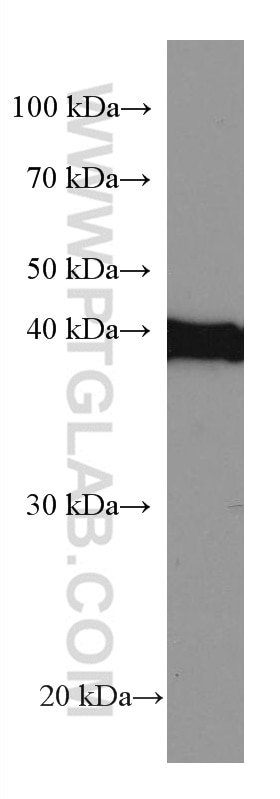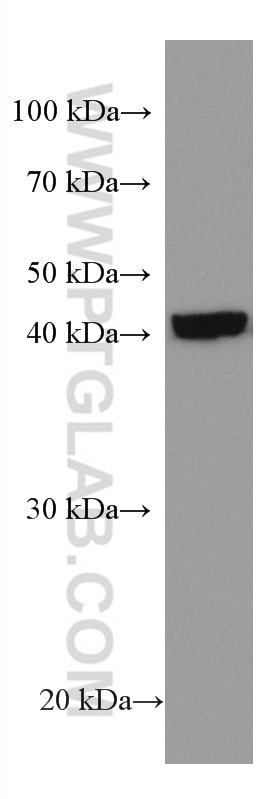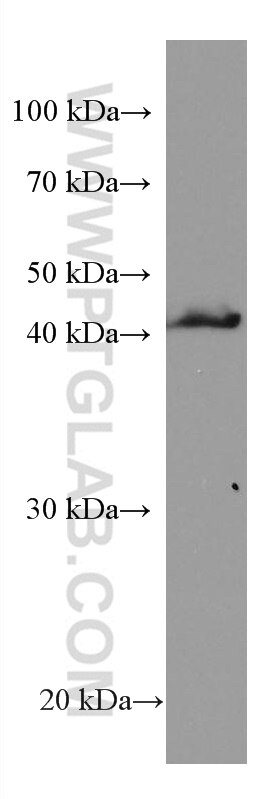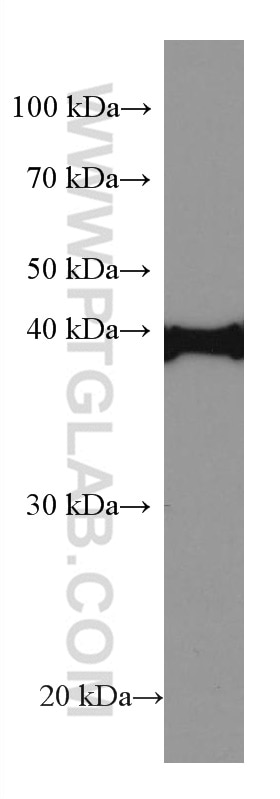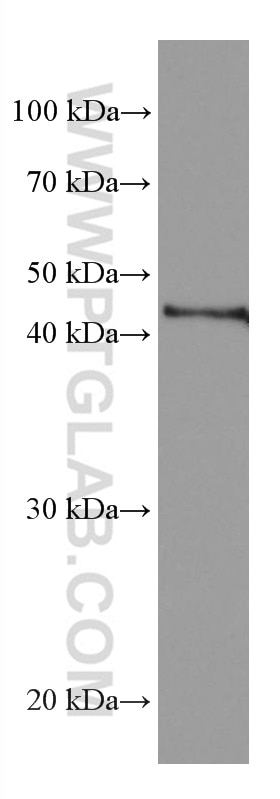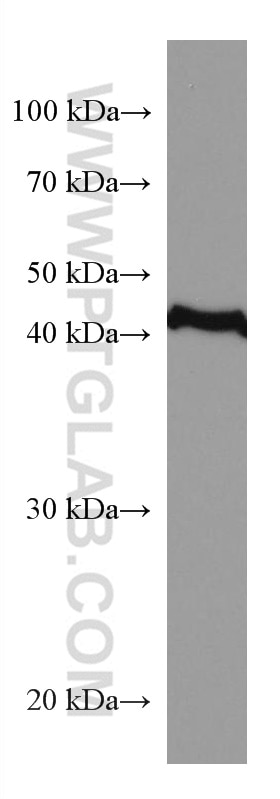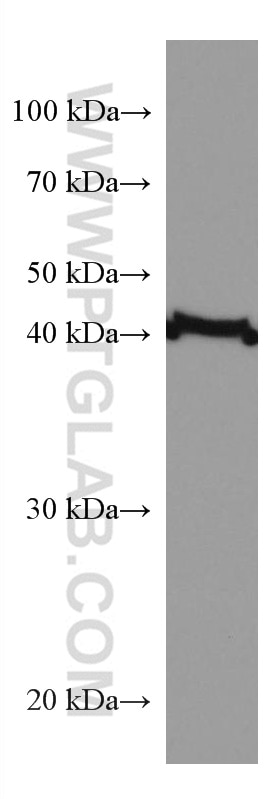Mitoferrin 1 Monoklonaler Antikörper
Mitoferrin 1 Monoklonal Antikörper für WB, ELISA
Wirt / Isotyp
Maus / IgG1
Getestete Reaktivität
human
Anwendung
WB, ELISA
Konjugation
Unkonjugiert
CloneNo.
1B1B2
Kat-Nr. : 67593-1-Ig
Synonyme
Geprüfte Anwendungen
| Erfolgreiche Detektion in WB | humanes Plazenta-Gewebe, HepG2-Zellen, humanes Milzgewebe, K-562-Zellen, L02-Zellen, LNCaP-Zellen, TF-1-Zellen |
Empfohlene Verdünnung
| Anwendung | Verdünnung |
|---|---|
| Western Blot (WB) | WB : 1:1000-1:6000 |
| It is recommended that this reagent should be titrated in each testing system to obtain optimal results. | |
| Sample-dependent, check data in validation data gallery | |
Produktinformation
67593-1-Ig bindet in WB, ELISA Mitoferrin 1 und zeigt Reaktivität mit human
| Getestete Reaktivität | human |
| Wirt / Isotyp | Maus / IgG1 |
| Klonalität | Monoklonal |
| Typ | Antikörper |
| Immunogen | Mitoferrin 1 fusion protein Ag26216 |
| Vollständiger Name | solute carrier family 25, member 37 |
| Beobachtetes Molekulargewicht | 40 kDa |
| GenBank-Zugangsnummer | BC132799 |
| Gene symbol | Mitoferrin 1 |
| Gene ID (NCBI) | 51312 |
| Konjugation | Unkonjugiert |
| Form | Liquid |
| Reinigungsmethode | Protein-G-Reinigung |
| Lagerungspuffer | PBS with 0.02% sodium azide and 50% glycerol |
| Lagerungsbedingungen | Bei -20℃ lagern. Aliquotieren ist bei -20oC Lagerung nicht notwendig. 20ul Größen enthalten 0,1% BSA. |
Hintergrundinformationen
Mitoferrin (mfrn, SLC25A37), which is highly expressed in fetal and adult hematopoietic tissues, is a member of the vertebrate mitochondrial solute carrier family (SLC25) and is located on the mitochondrial inner membrane. It functions as an essential and high-affinity iron importer for the biosynthesis of mitochondrial heme and iron-sulfur cluster in vertebrate erythroblasts. Additionally, since it was identified as a major depressive disorder (MDD) risk gene, it is likely to be used as a potential biomarker of MDD diagnose.
Protokolle
| PRODUKTSPEZIFISCHE PROTOKOLLE | |
|---|---|
| WB protocol for Mitoferrin 1 antibody 67593-1-Ig | Protokoll herunterladen |
| STANDARD-PROTOKOLLE | |
|---|---|
| Klicken Sie hier, um unsere Standardprotokolle anzuzeigen |
